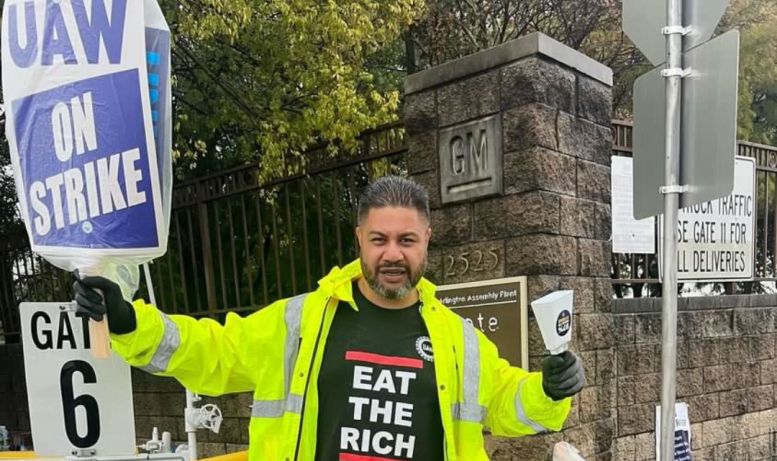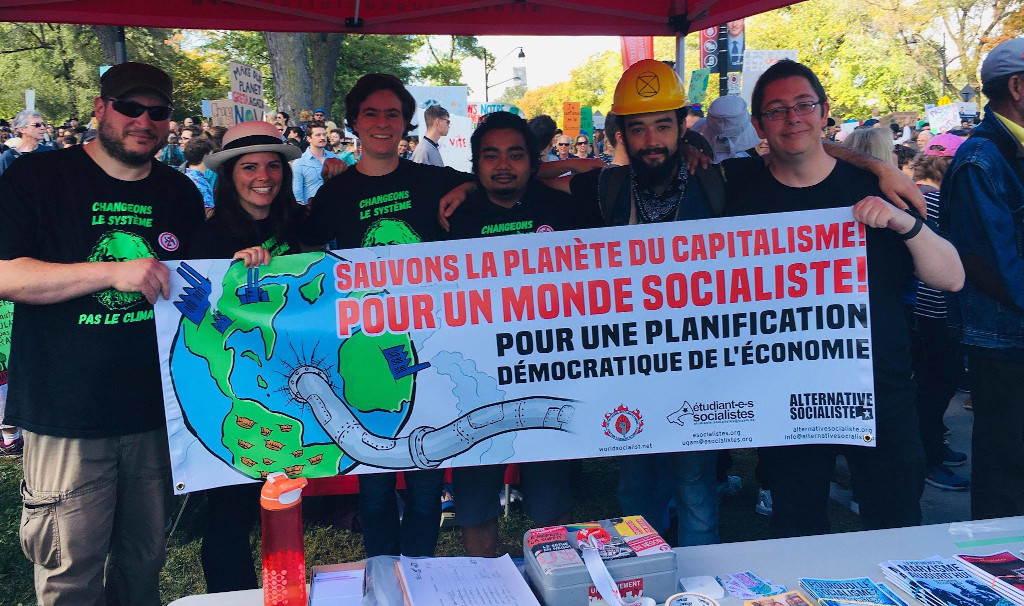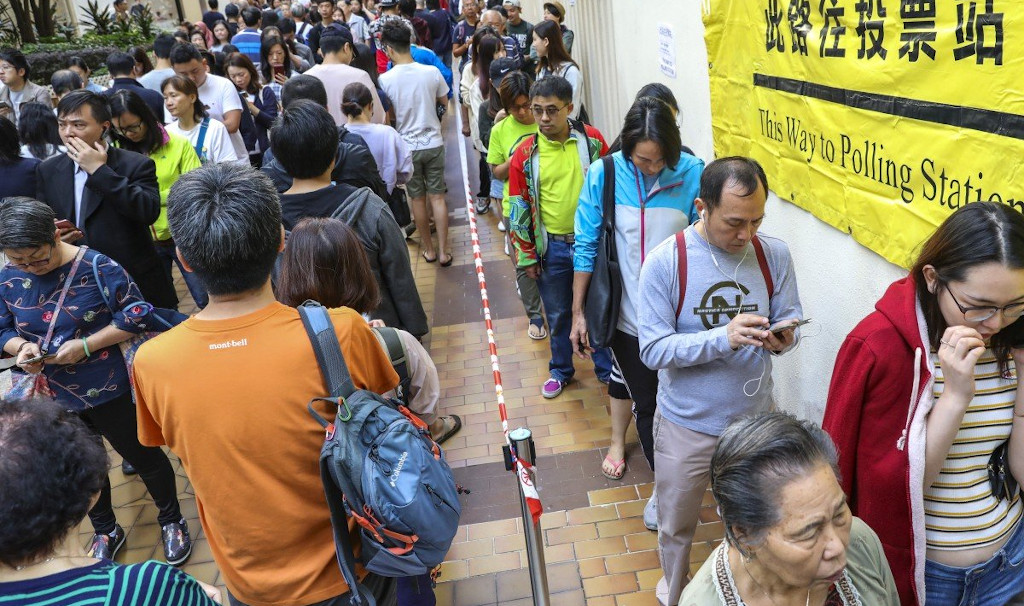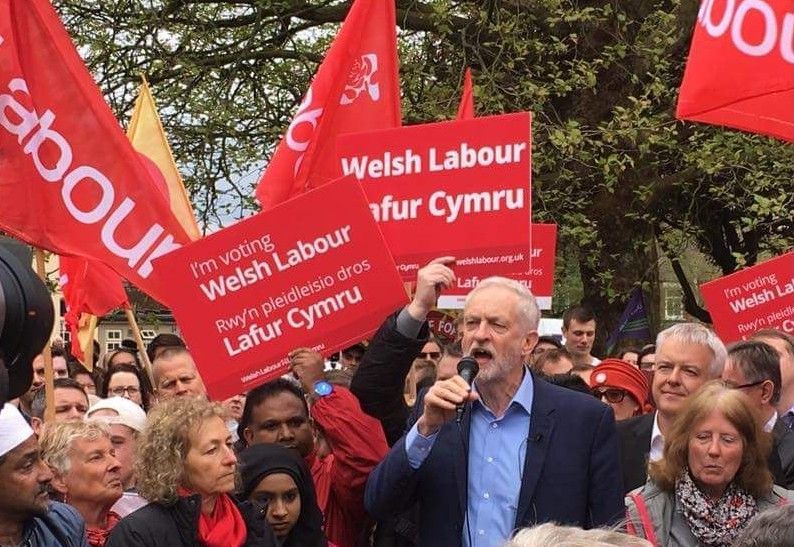Ty Moore is a member of Socialist Alternative in the US.
“We lost everything on one contract [in 2009]. There’s no reason why they can’t give this stuff back to us in one contract.” – Jerry Coleman, five-year temporary worker at the Stellantis Jeep plant in Toledo (NPR)
Millions of workers watched the auto workers strike and win significant gains for its members this year. For many young workers, this was the first big industrial strike they’ve ever witnessed. By the end of this contract, all full-time production and skilled trades workers employed by the Big Three US automakers will make at least $40/hr on reaching the top of the pay scale, which will now be reached after three years full time employment instead of eight years under the old contract. Some newer, mostly younger workers will see their wage jump from $20/hr to $30/hr this year. Unions can change people’s lives and the United Auto Workers (UAW) leaders now say they want to organize the entire auto industry into the union. This is the moment that labor must seize.
64% of auto workers at the Big Three have voted to ratify new contracts. This ends a six-week strike that marked the first time in history the UAW struck all three auto companies simultaneously. From 2013 to 2022, the Big Three automakers – Ford, Stellantis, and General Motors – saw profits increase by 92% totaling $250 billion. This jump in profits came following significant concessions made by the union, under massive pressure from the Obama administration in 2009 during the auto industry crisis which was deepened by the Great Recession.
Many auto workers saw this as an opportunity to win back all that was lost in 2009, including cost-of-living adjustments (COLA) and ending tiers around wages, pensions, and retiree healthcare. Expectations were high coming into this contract struggle and sights were only raised during the course of the six-week strike. The high “No” vote, especially at GM where roughly 45% of auto workers voted against the tentative agreement (TA), shows that a significant number of workers shared this sentiment and wanted to fight for more.
As contracts are ratified, significant gains have been won. Auto workers will see 25% wage increases over the course of the contract, the COLA formulation has been restored, wage tiers eliminated and the progression from starting pay to top rate shortened, and auto workers won the right to strike over plant closures, which is a growing threat as the auto industry transitions to EV’s. These gains are a testament to the willingness to fight of all auto workers at the Big Three, and shows what can be won when strike action is taken. Every step of the way the Big Three bosses said that what workers were demanding was not possible, only to cave under the pressure the growing strike placed on their profits.
Raised Confidence of Workers
The high strike authorization vote as well as the high “no” vote at the Big Three show that the confidence of workers has been raised. Employers across the country including those at the Big Three are recognizing this too, as the “hot labor summer” carried over into fall with a number of high-profile strikes including those in the auto industry as well as the largest ever strike of healthcare workers at Kaiser Permanente. Within the UAW, workers at Mack Truck voted down their TA and went on strike for the first time in 35 years.
Workers are feeling the pressures of inflation and the cost-of-living crisis. But they are also feeling an increased sense of confidence to fight their employers for strong union contracts while there is a strong jobs market with low unemployment. At GM, where the “no” vote was the highest and workers likely wanted to fight for more, their sights were undoubtedly raised after the experience of going on strike in 2019. It shows how workers feel more empowered when they feel like they can make their own mark on the situation, which is why conservative union leaders and the bosses generally avoid strikes.
Defeat Of The “Old Guard”
Only six months before the strike began, UAW President Shawn Fain was elected as part of a reform slate within the union, ousting the previous corrupt leadership. The Old Guard leadership oversaw the massive concessions given up in 2009, and this followed on top of decades of pursuing a policy of collaboration with the bosses rather than leading a struggle against them for stronger contracts. This approach is part of what led to the deteriorating working conditions within the auto industry, and saw UAW membership plummet from 1.5 million in 1979 to roughly 380,000 today. The defeat of the Old Guard undoubtedly played a role in raising workers’ expectations for a stronger contract, and voting “no” against a TA that for many fell short of their expectations.
Reform caucuses are emerging across the labor movement with notable wins in the UAW and the Teamsters. This is a welcome trend within the labor movement that should be supported. Sean Fain’s class struggle language stands out. He wore “eat the rich” shirts, railed against billionaires, and framed their contract struggle in broader class terms. He is calling on every US union to coordinate their contract expiration dates in 2028 to allow for a “general strike,” which is an overly formalistic approach but a big step in the right direction. All of this is a breath of fresh air that tapped into the deep wells of anger auto workers share with all working-class people.
Unfortunately, the “stand up strike” strategy of a gradual widening of the strike was run in a very top-down manner, with workers being directed to picket or stay at work by only a small select leadership team, and failed to fully mobilize the weight of the UAW membership into the struggle. Fain directing striking auto workers back to work before they had a chance to vote on the TA’s also seriously undermined the potential to push for more gains. Careful planning that relied on mobilizing the whole working class into a general struggle, was a key factor in the “sit down” strikes of the 1930’s that led to rapid growth of unions, and a major change in the balance of forces between workers and bosses.
Withholding Support for Democrats Got Results
Fain made headlines when he publicly withheld the UAW’s endorsement from Biden, instead using it as an opportunity to place demands on the President. By doing so, Fain bucked the trend of most other unions who raced to give the Democratic President their endorsement and complete uncritical support. On withholding the union’s endorsement, Fain said, “Our endorsements are going to be earned. We’ve been very clear about that, no matter what politician.” Biden becoming the first President in US history to visit a picket line is both a sign of the crisis his administration is in and a direct result of the pressure he’s under to win the UAW’s endorsement and the support of working people across the country who supported the strike.
Fain withholding his endorsement of Biden is a welcome change from business as usual, but this needs to go even further. While many labor leaders place their faith in the Democratic Party, this has led to an absolute dead end for the labor movement. Fain and other left labor leaders need to support and put up their own working-class candidates, independent from the Democratic Party, standing on a program that will benefit working people. Running viable elected officials who refuse corporate cash, feel no obligation to the corporate leaders of the Democratic Party, and who fight unapologetically for policies like expanded Medicare for All, strengthening social security, and passing the PRO Act would benefit every union in every contract struggle.
More Could Have Been Won
One of the strengths of the UAW’s campaign was that they led with clear, strong demands like 46% raises, reinstating the COLA language, and more. Strong demands like these can inspire workers to make the sacrifice to go out on strike because it makes clear exactly what they are fighting for. It unites the workforce around common goals.
However, Team Fain also put the most ambitious demands out there with no plan to win them. The demand for a 32-hour work week with no loss of pay was dropped as a demand very early on. Pension tiers remain in place, meaning all workers hired after 2007 still don’t have defined pension plans. Wage demands were inexplicably reduced from their original 46% to match the raises received by Big Three CEO’s, and the raises won don’t bring top scale workers back to where they were before 2008. One worker said on the wage increases, “When the company is making the kind of profits they are currently making this quarter … why do I have to wait another four years for any kind of raise that’s actually gonna benefit me and my family?”
Fain’s “stand up strike” strategy is being celebrated by many labor activists as a new, smarter way to carry out a strike. It is refreshing for a labor leader like Fain to lead with strong demands and carry out a strike of tens of thousands of workers, but the limited nature of the strike ultimately left a lot of money on the table. There is absolutely a case for a limited strike in certain situations, but not when there is a clear mandate to strike following a 97% strike authorization vote by auto workers.
Fain is already pointing towards striking the Big Three again in 2028 to win pensions and more, but there are no promises the same favorable conditions – low unemployment rates, surging support for unions, rising mood among workers to fight – will exist then. Ultimately, the “stand up strike” was an inspiring fight by auto workers that won far more than previous contracts, but the strategy itself was top down and did not bring the full strength of the rank and file to bear against the bosses.
Next Steps
UAW members must now put pressure on their leaders to follow through with organizing all auto workers into the union. Already, the strike at the Big Three has led to raises being offered across the non-union parts of the auto industry. Toyota, Honda, Hyundai, and Nissan have all announced wage increases which are clearly in response to those that the UAW won. They see the historic support for unions and strikes, they hear corporate politicians like Biden being forced to utter words of support for unionizing Toyota and Tesla, and they’re prepared to make some concessions to try to keep the union out. We need to be clear that any gift from the boss is temporary, and no substitute for a solid union contract that also includes other worker protections.
However, a union contract is worth nothing if it can’t be enforced on the job. Sean Fain can’t do this on his own. It will be necessary to develop a whole layer of rank-and-file activists and shop stewards who are empowered to take the initiative to confront every encroachment from the boss. This rank-and-file network can also lay the basis for a stronger strike next time to win back all the lost gains auto workers have suffered over the decades.
However, even the strongest union can’t stop corporations from trying to maximize their profits, and nowhere is this more true than in the auto industry. For decades, jobs have been deskilled, outsourced, and automated under both Republican and Democrats. This is why the unions need their own political party, which fights for the interests of the whole working class, and why socialists fight for demands like democratic, worker control of major industry to be run for the betterment of society, not the enrichment of billionaires and shareholders.
- UAW must develop elected workplace structures in every one of its plants to enforce the contracts and get strike ready for 2028. UAW must end the collaboration with management that has undermined the union.
- UAW should mobilize and develop city-wide campaigns wherever non-union plants exist to involve the widest number of workers in union drives.
- UAW should run its own candidates for city-wide office, wherever it has a membership base, as a step to a political party of labor, independent of big business.




